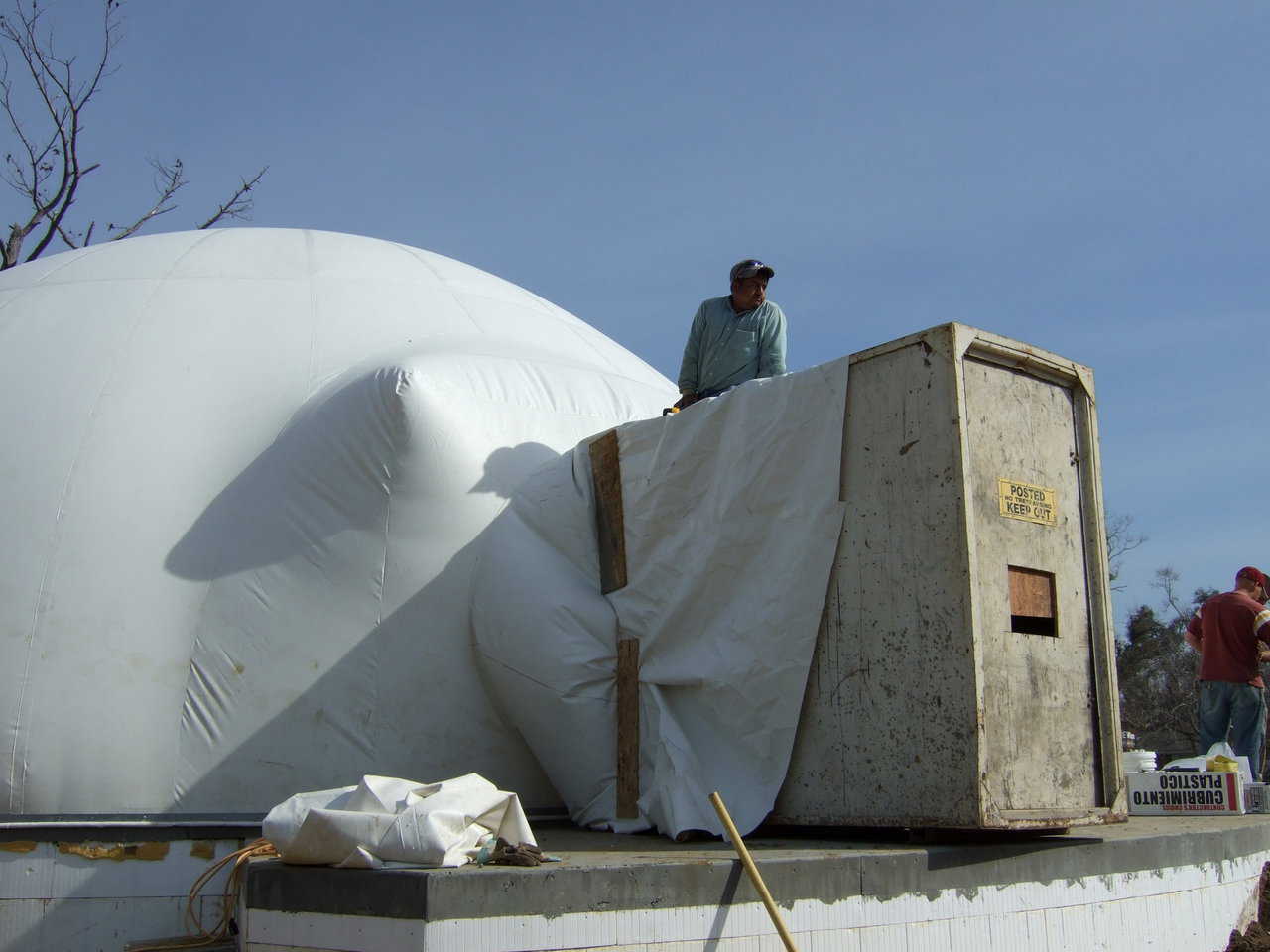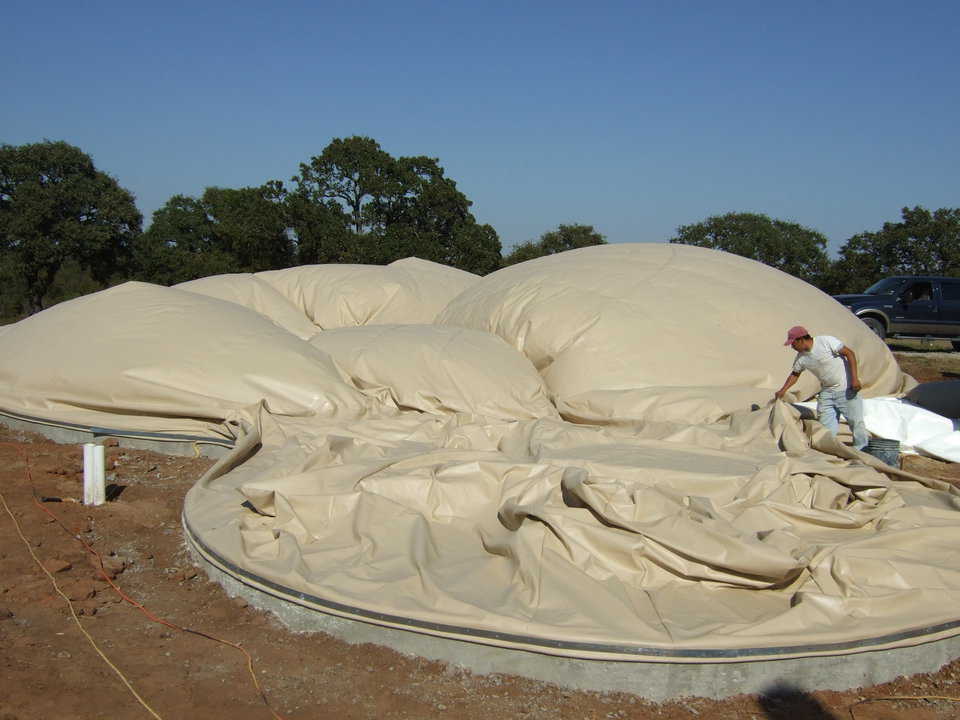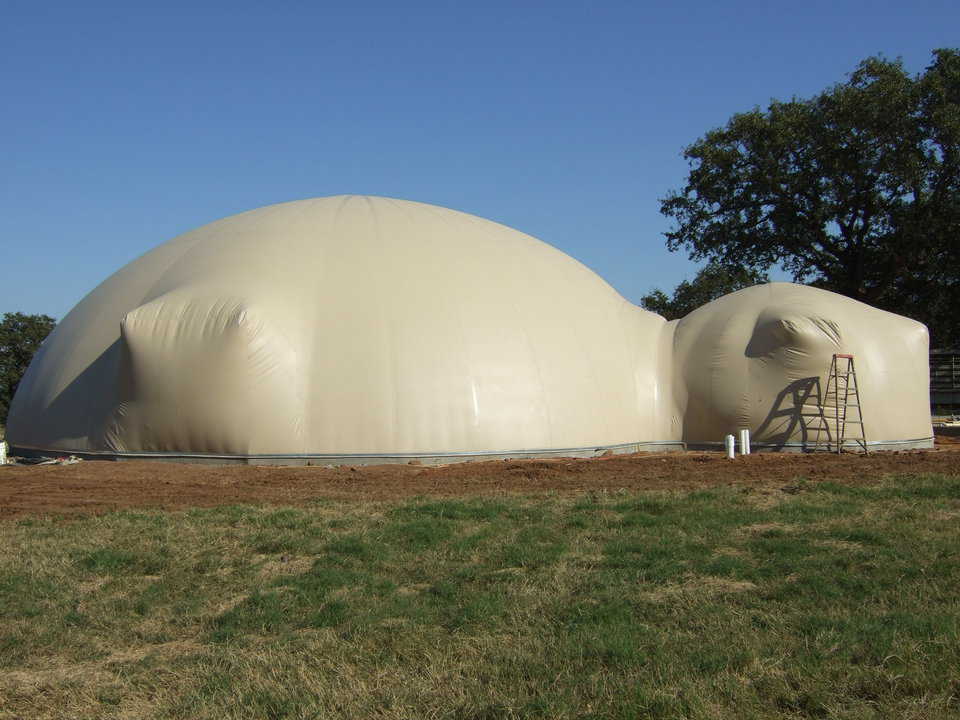The Right Way
When constructing a Monolithic Dome, proper inflation of the Airform and continual regulation of air pressure are as important as clean foam and Shotcrete application. This article is an attempt to solidify proper inflation and regulation of air pressure techniques. If after reading this article you are still unsure about ANY step in this process, please call us (972)483-7423.
Once the Airform is in place, bolted down and thoroughly inspected, it can be inflated.
Note: The measurement of air pressure referred to here will be inches of water column. This is the amount of air pressure differential needed to raise water in a column.
Since the Airform is most vulnerable when partially inflated, inflating should NOT be done in strong winds – no more than 10-15 mph. Less than 5 mph is certainly desirable. If the Airform is inflated during mild windy conditions, it is extremely important that all exposed surfaces on equipment inside the Airform be padded.
For small Monolithic Domes, inflation usually takes less than 30 minutes. During inflation, continual inspection of the Airform is absolutely essential.
Inflating the Airform
- Inflator fans are started and the Airform inflated. Air pressure must be regulated. As the building inflates, the easiest way to adjust the pressure is by opening the airlock doors. When the Airform first becomes tight, the inside air pressure should be held at a minimum (about one to two-tenths) of one inch water column.
- Airform should then be checked for weak spots, holes, etc. Airform tie-down should then be completely checked.
- At this point, a check should be made on the pressure gauge. The pressure gauge (manometer) may be nothing more than a clear drinking glass, half filled with colored water, and a small (1/8") clear tube running from the water, through a hole in the Airform, to the outside. The additional air pressure inside the Airform will force water up the tube to a level higher than the water in the glass. The difference in vertical distance is the actual air pressure reading in inches of water column.
- Air pressure can then be gradually increased until it measures two inches of water column. While this is being done, the Airform and tie-downs should be checked for any problems. (An EcoShell is usually built at 6" of pressure.)
- Whenever possible, let the Airform stand at least 12 hours before continuing construction. This gives it time to stretch.
Regulating Air Pressure
Regulating the air pressure is a very important part of the construction of the dome. Job supervisors should always be aware of the following information:
It takes very little pressure to inflate the Airform to its proper shape.
Foaming should take place at the full 2" of water column pressure. It can be tempting to open the airlock door while the foam is being applied to get fresh air into the building. But if this is done during foam application, the pressure will be lowered, increasing the possibility of deforming the structure’s shape.
If the fan is able to keep up, a small vent can be cut in a window or other opening to allow some airflow. Be sure to close the air flow if drying occurs in the concrete phase of construction.
As air pressure is increased on a bare Airform, the chance of Airform breakage is also increased. In general, smaller Airforms easily handle most air pressures up to several inches of water column, but they may stretch more than is desirable.
The more consistent the air pressure at 2", the less chance there is of deforming the shape of the domes during the application of the foam and the concrete. In addition, if there is any over-inflation after the initial concrete is applied, the Airform can stretch and crack the concrete. If pressure is increased while hanging rebar, rebar hangers may be pulled out of the foam.
Uplift must be considered.
Uplift is approximately 5 pounds per square foot of floor area per inch of water column. Footing must be heavy enough to hold this weight down. This is another reason the floor and the footing are often combined on smaller structures.
Note: The EcoShell I Airform is usually inflated to 6 or more inches of water column pressure. Please check EcoShell Construction for special considerations.
After the Airform is inflated, it is useful to measure the Airform to get an exact profile.
Note: This article was updated in July 2007.


